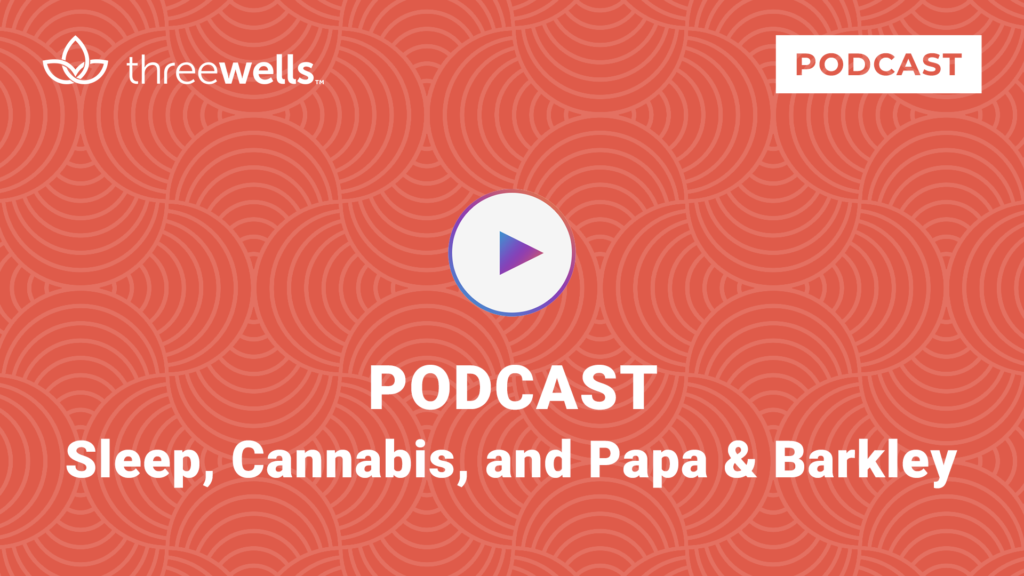Read Time: 4:00
If you’re an adult curious about cannabis, you’ve probably learned a little bit about THC and CBD, the primary, most well-known cannabinoids in cannabis. Each works differently in the body with THC providing the psychoactive, euphoric part, and CBD providing anti-inflammatory and relaxing benefits. But what are terpenes, and why do they matter in cannabis?
I first read the word terpenes during college football season and assumed it was a typo about the University of Maryland Terrapins. For the record, a terrapin is a turtle and has nothing to do with plants. Terpenes are a natural part of a plant’s genetic makeup and play a huge role in determining its taste, smell, and characteristics. With cannabis, terpenes not only affect the strain’s taste and smell but they also strongly impact the strain’s medicinal properties. As a result, certain terpenes may work better in supporting and helping specific medical conditions. There are over 100 terpenes in the cannabis plant, but only a few are found in significant concentration. Here’s a quick breakdown:
ALPHA PINENE
is the most common terpene on the planet. Much as the name suggests, this terpene smells like pine trees (pine oil), appears in conifers and numerous other plants and is highly repellent to insects. It is a bronchodilator, anti-inflammatory, anti-bacterial, anti-fungal, and also promotes mental alertness.
BETA CARYOPHYLLENE
has a light spice aroma that is found in the essential oils of black pepper, oregano, and other edible herbs. It is anti-bacterial, anti-fungal with anti-inflammatory and analgesic effects, it is gastro-protective, and has anti-malarial properties.
LIMONENE
This terpene has a citrus aroma and takes its name from the lemon and gives citrus its characteristic scent. It is anti-bacterial, anti-fungal, a bronchodilator, and it improves mood to treat anxiety and depression. It relieves heartburn and acid reflux has been used clinically to dissolve gallstones, is an anti-convulsant, and has been shown to destroy breast cancer cells.
LINALOOL
has a pleasant floral scent that is found in lavenders, citrus laurels, birch, coriander, and rosewood. It is anti-bacterial, an anti-depressant, an anti-anxiety stress reliever, has sedating properties, and is also an anti-convulsant.
[bs-white-space]
MYRCENE
This terpene has a musky and slightly metallic odor. It is anti-inflammatory, analgesic anti-spasmatic, antimicrobial, antiseptic, antioxidant, anti-carcinogen, hypnotic, and sedating, leading to the “couch-lock” effect.
Terpenes in Cannabis Concentrates, Distillates, and Oils
When you smoke, vape, or eat raw cannabis flower you ingest the natural terpenes found in that strain. As cannabis legalization grows, there are now many ways to consume cannabis. Commercial products like vapes, oil cartridges, dabs, waxes, tinctures, edibles, and topicals all use oil extracted from the cannabis plant. During the formulation process, the various cannabinoids, terpenes, and other parts of the plant are typically separated and remixed into the final version of the product. This is known as the whole plant or “Entourage Effect” so you get all the medicinal benefits of the plant. It’s also a way of creating consistent products for taste, terpene content, THC to CBD ratios, and other ingredients.
We were curious about how cannabis companies add terpenes to their products, so we contacted David Heldreth, the Chief Science Officer of True Terpenes® in Portland, Oregon. When a cannabis company wants to create a custom terpene profile for their products, multiple samples of the raw flower must be tested in a third-party lab. This is critically important because the same strain grown in different locations will have different characteristics due to the source of the seed, the environment, growing conditions, etc. David explained that “The cannabis plant is really complex. Whether it’s a strain from Boston or Oklahoma, they’re asking us to replicate what they’ve grown, and we rely on the lab results to identify what’s in those samples and their nuances.”
True Terpenes’ formulators then take the test results and recreate that strain’s general terpene content. It’s a time-intensive process taking anywhere from four to six months to create a custom formulation. True Terpenes provides samples and recommendations throughout the creation process, and David explained that “In the end, the client decides on the final formulation of their product. Some people want it to taste like cannabis, some don’t, and there’s no right or wrong answer. Take coffee for example. Some people prefer a dark roast, some like a light roast. There’s a variety in the market and what customers want. We’re providing the solutions for all the different options.”
THC and CBD are the gas pedal. Terpenes are the steering wheel. ⎼ David Heldreth
Regardless of the source, terpenes guide the experience. David put it this way. “For people who use essential oils, Lavender is a good example. It’s soothing primarily due to the terpenes Linalool and Myrcene. Alcohol is another good example. Hops (used in beer) are actually closely related to the cannabis plant, they’re in the same family. The terpene Humulene in hops closely mimics cannabis, in fact, that’s one reason why it smells skunky. The terpenes Linalool and Myrcene then help you unwind as you’re enjoying a beer and easing into your evening.”
For your next cannabis purchase, remember, it doesn’t really matter whether it comes from an indica or a sativa plant. These are essentially descriptions of the plant’s dimensions and shape, not the medicinal benefits. It’s the terpenes that are actually driving that bus and creating the experience. Ask your budtender about the terpene content in the flower or product you’re purchasing and see how they respond. David summed it by saying “It’s kind of like describing what a tomato will taste like whether it’s grown on a vine or on a bush. The cannabis plant is so beautiful and complex and now people are beginning to understand terpenes. This is going to take people on a journey of natural compounds. Cannabis is just reinforcing these things about plants, medicine, and health and it’s tieing everything together.”
A key part of medical cannabis is your personal journey of how different strains, cannabinoids, and terpenes may help you. The science of terpenes is in the early stage, and as we learn more, exciting discoveries are sure to benefit us all.
Have you heard about terpenes before? Does this seem exciting to you? If it does, let us know. Log in, make a comment, or start a conversation on our social channels.
Philip Rebentisch is a Contributing Editor for Three Wells. He is also the host of the podcast Cannabis For the Rest of Us on Apple Podcasts, sponsored by Three Wells.



